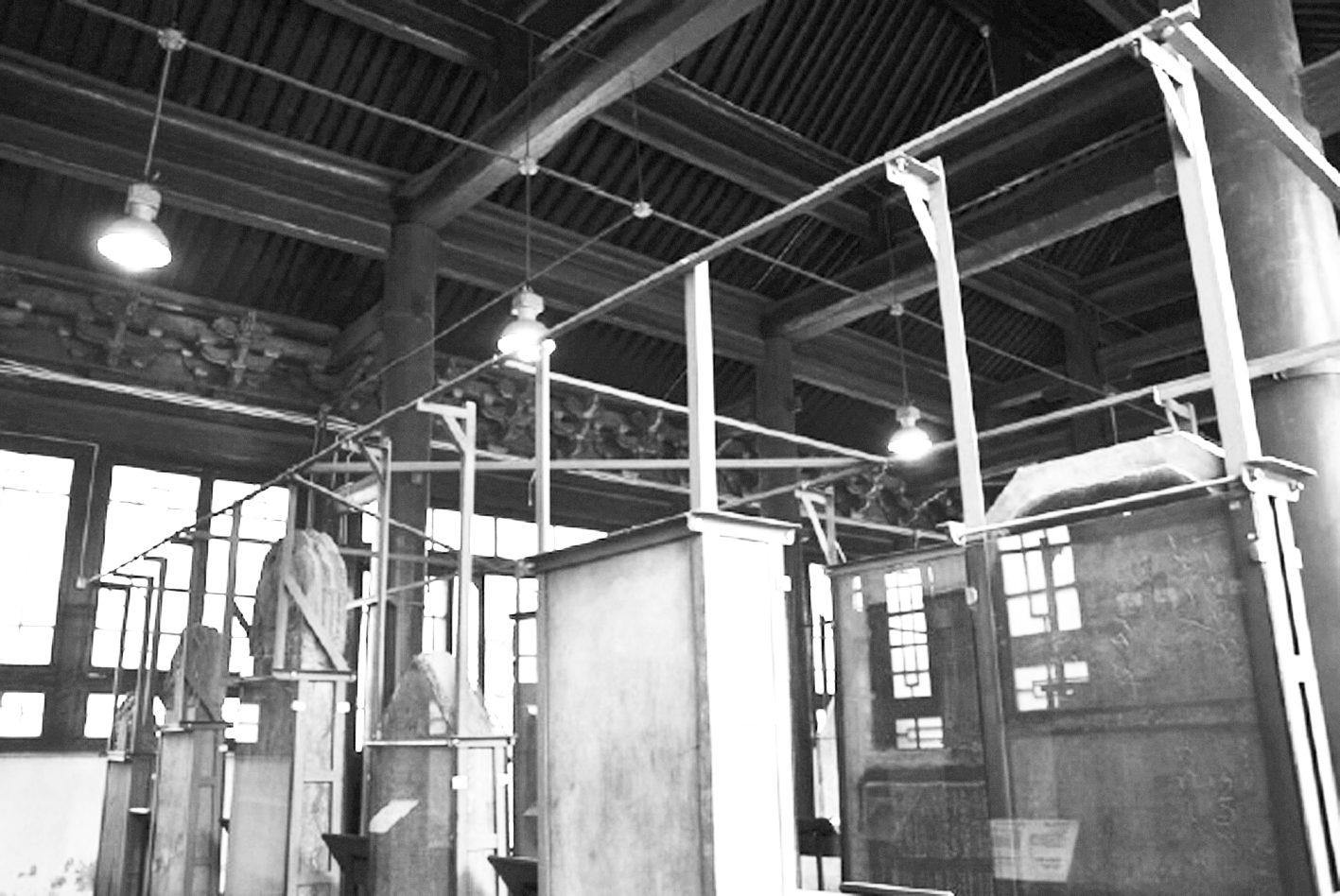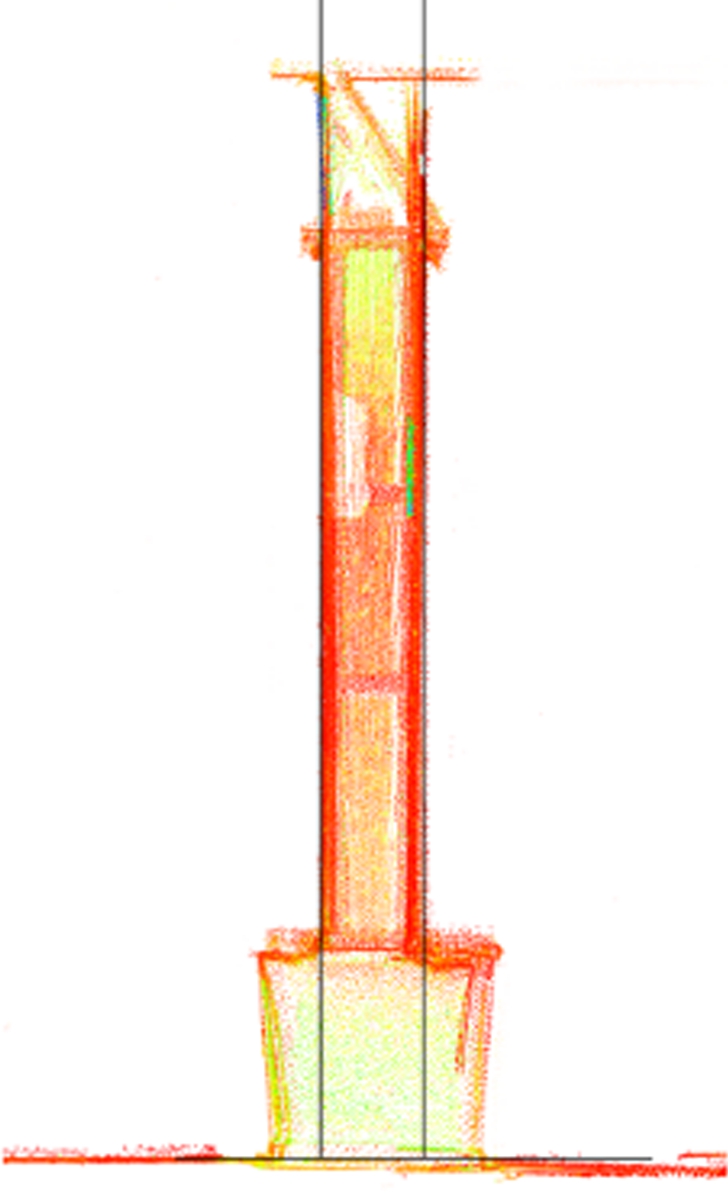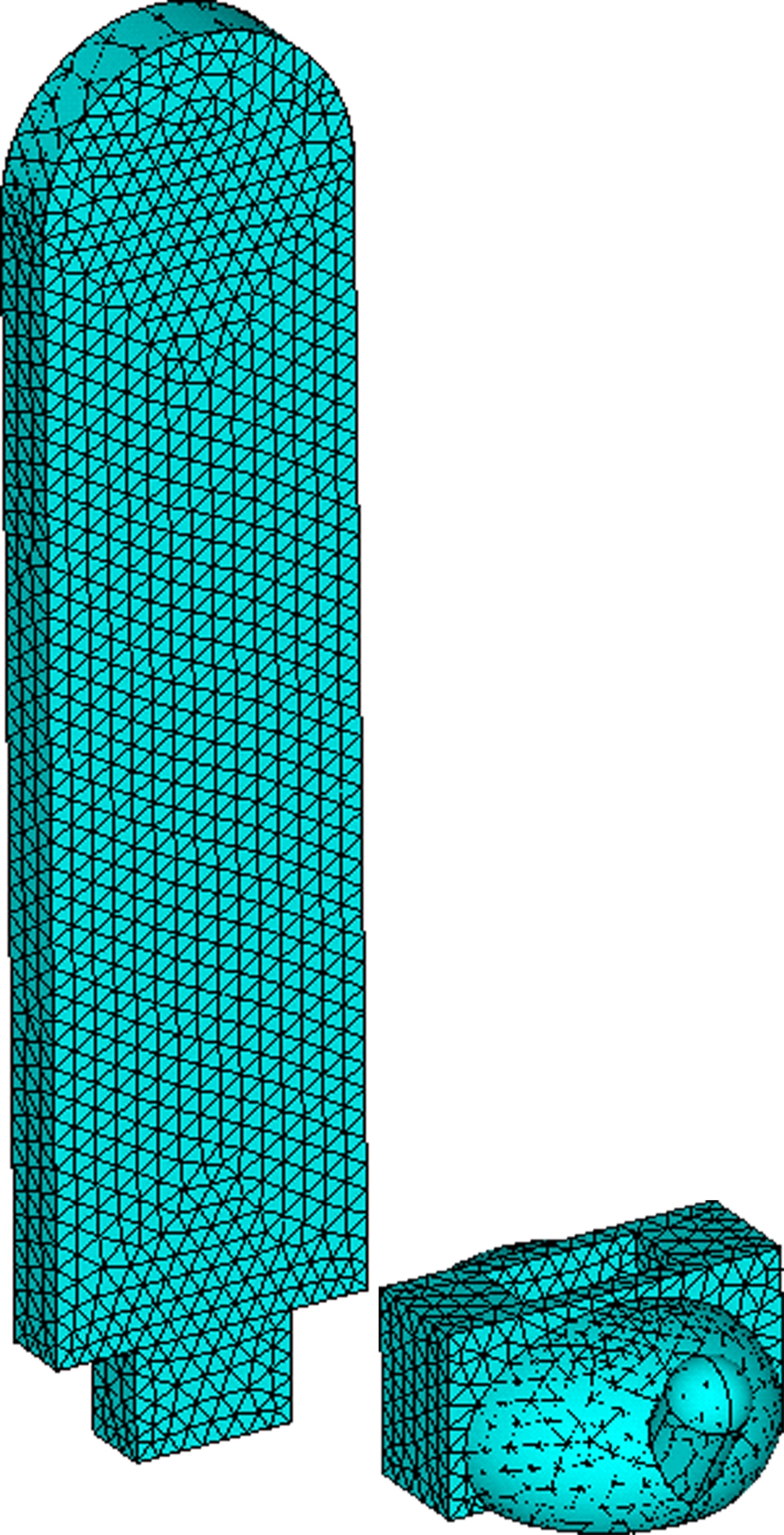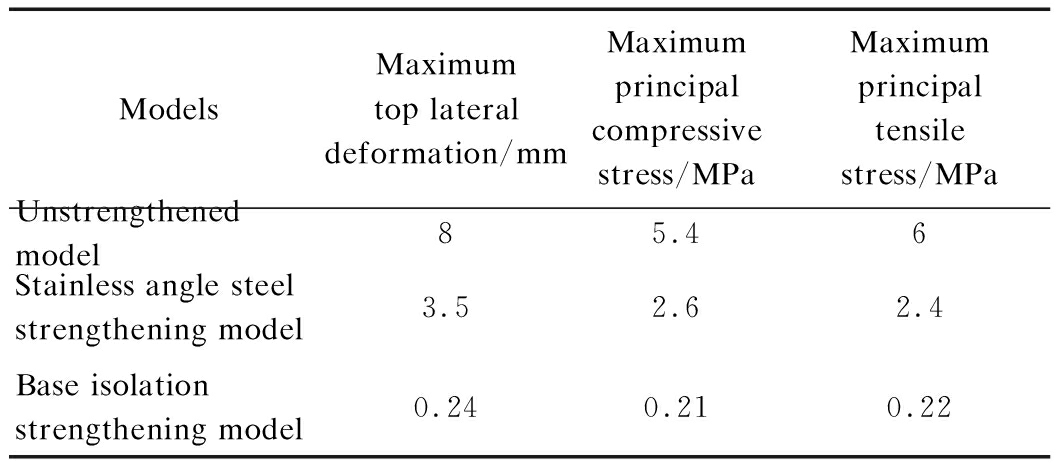Steles were widely used in some important mausoleums in ancient China. Many ancient steles have been preserved till now and they almost all have different types of damage. The conservation techniques of these stele relics have recently attracted much attention from academic circles and engineering circles. Vasanelli et al.[1]carried out the experiments to study the effectiveness of ultrasonic pulse velocity in evaluating physical and mechanical properties of highly porous building limestone. Vasconcelos et al.[2]evaluated the physical and mechanical properties of granites by the method of ultrasonic pulse velocity. Meng et al.[3]established an intelligent and efficient regression forecasting support vector machine model based on terahertz spectra to obtain the weathered depth of Yungang Grottoes. El-Gohary[4]carried out four tests to estimate the efficiency of stone consolidants based on ethyl silicates and investigated the changes of chemical characteristics and physio-mechanical properties of stone samples collected from Edfu birth house before and after consolidation, and after artificial aging. Sassoni et al.[5]investigated the feasibility and the effectiveness of using hydroxyapatite formed by reacting limestone with a solution of diammonium hydrogen phosphate in mild conditions, as a consolidant for carbonate stones. Tesser et al.[6]studied the stability of siloxane stone strengthening agents involved in their chemical nature, polymerization reactions and their stability under oxidative stress, etc. Lignola et al.[7]studied and compared different structural modeling to analyze the seismic vulnerability of natural stone pinnacles on the Amalfi Coast in Italy. Akta et al.[8]studied the dynamic testing and earthquake simulations of nemrut monuments and proposed simple strengthening solutions. Similar studies were carried out by Park et al[9-12].
et al.[8]studied the dynamic testing and earthquake simulations of nemrut monuments and proposed simple strengthening solutions. Similar studies were carried out by Park et al[9-12].
Chinese stele relics are a special type of stone relics, usually composed of three parts: stele pedestal, stele body and stele cap. The stele pedestal and body are connected by the mortise and tenon joint. The stele relics are easily damaged in earthquake due to large slenderness ratios and brittle material properties. In this paper, the typical stele relic in Xi’an Beilin is taken as an example, the structural performance of the typical stele relic and the suitable aseismic strengthening techniques are studied. In order to study the structural performance of the stele relic, the dimension information, the material information and the damage information need to be understood first.
1 Situation Analysis of the Steles Relics
The stele relics are located in the famous ancient city of Xi’an. They have important historical value, artistic value, and scientific value. There are 103 exhibiting stele relics in No.5 Room, of which the area is 194.59 m2. Most of them have different durability problems such as weathering damage, cracking damage, spalling damage, etc. Now, all of them are protected by the low-carbon angle steels which are very crammed and easily rust. These crammed and rusty low-carbon angle steels have significantly impacted the exhibition and structural safety of these stele relics. A suitable aseismic strengthening technique for these stele relics urgently needs to be studied.
1.1 Survey with 3D laser scanning method
In order to obtain the precise geometrical information of the stele relics, the 3D laser scanning technique was used in this project, as shown in Fig.1. The precise geometrical information, inclination and other damages of these stele relics were obtained.

(a)

(b)
Fig.1 3D scanning image of the stele relics. (a) Overall view of scanning; (b) Sectional view of scanning
1.2 Main damages of the stele relics
According to the detailed on-site investigation of the stele relics, the main damages of the stele relics are as follows.
1.2.1 Mechanical damage
The edges of many stele relics have mechanical damages to different degrees. The damages greatly affect the overall exhibition of the stele relics. The large mechanical damages in the middle or the bottom of the stele relics are hidden dangers to the structural safety of the stele relics.
1.2.2 Surface weathering
Since many of these stele relics were collected from other places, and they have been exposed in outdoor environments long-term, the freezing and thawing effect causes the stele relics to have certain defects, cracks and shedding on the surface. With the continuous deterioration of cracking and shedding, the structural safety, the art aesthetics and the text information of the whole stele relics will be seriously threatened.
1.2.3 Crack
Some stele relics were broken into two or more parts before they were moved to this place, and they were bonded together by cement mortar, lime mortar or structural adhesive. Furthermore, due to the long-term loading effect, the freezing and thawing effect, the weathering effect, etc., some cracks also occur in the stele relics.
1.2.4 Surface contamination and discoloration
Some stele relics have surface contamination and discoloration due to the lack of surface protection and some other uncivilized behaviors. The surface contamination and discoloration seriously affect the appearance of the stele relics.
1.2.5 Unsuitable strengthening and repair treatments
Many cracks were consolidated by cement, which probably cause the second destruction to the stone material due to the high strength of cement mortar and water soluble salt. Moreover, not only was each stele relic strengthened by a low-carbon angle steels, but also all the stele relics were also connected by a low-carbon steel frame adjacently. These low-carbon angle steels are rusty now, and the crowded low-carbon steel frame seriously affects the exhibition and the structural safety of the stele relics. The current unsuitable strengthening treatments are shown in Fig.2.

(a)

(b)
Fig.2 Current unsuitable strengthening treatments. (a) Streng-thened by a low-carbon steel frame;(b) Loose low-carbon steel frame
1.2.6 Inclination
Some stele relics are very tall, and their slenderness ratios are large. Most of them have the inclination damages to different degrees, as shown in Fig.3. The inclination damages seriously threaten the structural safety of these stele relics.


(a) (b)
Fig.3 Inclination of the stele relics. (a) Side elevation; (b) Front elevation
1.3 Reason analysis of main damages
The stele relics are mainly made of various types of limestone, which is a sedimentary rock. The main mineral compositions of limestone are calcite of which the chemical composition is CaCO3, a small amount of clay minerals, and quartz, etc. The characteristics of limestone are high strength, low water absorption and low porosity. The main reasons for the damages of these stele relics can be divided into the following categories: physical factors, chemical factors, biological factors, human factors and structural factors.
1.3.1 Physical factors
The physical factors are mainly temperature, humidity, moisture content, and soluble salt state, etc. Most of these stele relics were put in outdoor environments before they were moved into the building, and the freezing and thawing of stone easily occured. The cyclic expansion and contraction of stone easily lead to internal tensile force and crack failure. Long-term moisture and the growth of plants and microorganisms inside the cracks of stone are harmful to the strength of the stone.
High soluble salt content easily leads to the salt precipitation phenomenon. The salt precipitation easily generates the flaking of the stone surface.
1.3.2 Chemical factors
Normal air contains about 0.03% volume ratio of carbon dioxide. When the carbon dioxide in the air meets water, carbonic acid is generated:
CO2+H2O![]() H2CO3
H2CO3
Carbonic acid is a weak acid, which has a corrosive effect on many limestone, murals, etc. The chemical reaction of the corrosion process is as follows:
H2CO3+CaCO3![]() Ca(HCO3)2
Ca(HCO3)2
Ca (HCO3)2is well soluble in water.
Furthermore, acid rain is also very harmful to limestone in outdoor environments. When atmospheric pollutants, such as NOxand SO2, meet the water, sulfuric acid and nitrous acid are generated. Nitrous acid is further oxidized in the air, and it will be changed to nitric acid, which is a strong acid. Nitric acid easily corrodes metal and limestone, resulting in the dissolution of the limestone, and the process is as follows:
CaCO3+2HNO3![]() Ca(NO3)2+CO2↑+H2O
Ca(NO3)2+CO2↑+H2O
Moreover, when the limestone is corroded by the atmospheric pollutants SO2, gypsum is generated, and the process is as follows:
2CaCO3+2SO2+O2+4H2O![]()
2CaSO4·2H2O(gypsum)+2CO2↑
1.3.3 Biological factors
When the environment is humid and the temperature is suitable, moss, fungi and some other organisms will grow. The organisms will affect the appearance of the stele relics and damage them. The organisms will increase the humidity on the surface of stele relics, and the moist environment is bad for their conservation. The organisms will produce acidic substances which are harmful to the stele relics. The growth of these organisms will expand the existing cracks continuously.
1.3.4 Human factors
Some human activities have also damaged the stele relics, such as war, fire, inappropriate transportation, and environmental pollution. Furthermore, previous strengthening treatments also damage the stele relics, for example, most of the existing low-carbon steel hoops are rusty and the rust is harmful to the stele relics.
1.3.5 Structural factors
Some structural factors such as large slenderness ratios of the stele body, the mortise-tenon connection joint of stele body and stele pedestal, etc. also easily cause the structural safety problems of the stele relics.
2 Structural Performance Analysis
2.1 Simplification and assumption
In order to find the structural safety problems of these stele relics, the structural performance of some typical stele relics was analyzed. In this paper, one typical stele relic of them was taken as an example to illustrate the analysis process. When the stele model was analyzed, the damages of the stele were assumed to be repaired, and the structural material can be simplified as isotropic homogeneous material.
2.2 Parameter value
According to the on-site survey and the relevant literature[12-13], the density of the limestone is 2 660 kg/m3, the static elastic modulus of the limestone is 30 GPa, the compressive strength of the limestone is 60 MPa, and the tensile strength of the limestone is 1 MPa.
2.3 Finite element model
In this paper, the finite element software ANSYS 16.0 was used to establish the analysis model. The geometrical size of the stele model was obtained by precise 3D laser scanning. The finite element of the stele model is shown in Fig.4. This finite element model has about 31×103SOLID45 units, 500 TARGE170 units and 500 CONTA174 units. The unit length is about 0.08 m.

(a)

(b)

(c)
Fig.4 Finite element model of the stele relic. (a) Side view; (b) Decomposition model; (c) Composition model
2.4 Static analysis
According to the on-site survey, this stele had a slight inclination, and the original low-carbon steel hoop was loosened and rusty, so in the static analysis, the original low-carbon steel hoop was not considered. Since the stele body and the stele pedestal were connected by the mortise-tenon joint, contact nonlinearity was considered in the analysis. In this paper, the structural performance of the stele model under the combined action of the dead load and the top lateral displacement from 1 to 5 mm is analyzed. The results are shown in Fig.5. The results show that when the top lateral displacement is 4 mm, the root of the stele body has penetrating cracks and the whole structure is very dangerous.
2.5 Dynamic analysis
The seismic precautionary intensity is eight degrees in Xi’an area, and the basic seismic acceleration is 0.2g. The El Centro wave was used to analyze the aseismic performance of the stele relic. In the time history curves, the maximum value of the seismic acceleration is 0.7 and 4.0 m/s2, in the case of frequently-occurring earthquake and rarely-occurring earthquake, respectively. The structural performance of the stele relic under the rarely-occurred earthquake of eight degrees is analyzed, and the results are shown in Fig.6.
(a)
(b)
(c)
(d)
(e)

(a)

(b)

(c)
Fig.6 Results of time history analysis under the rarely-occurred earthquake of eight degrees. (a) Deformation at the top of the stele relic; (b) Principal tensile stress at the foot of the stele relic; (c) Principal compressive stress at the foot of the stele relic
The results show that under a rarely-occurring earthquake of eight degrees, the largest deformation occurred on the top of the stele relic, and the time history curve of deformation is shown in Fig.6(a), the maximum deformation is 8 mm which is higher than 4 mm, so the structure will be overturned. The maximum principal compressive stress in the earthquake is 5.4 MPa which is much smaller than 60 MPa, so the stele relic does not generate fracture failure, but the maximum principal tensile stress in the earthquake is 6.0 MPa which is much higher than 1 MPa, so many cracks will occur in the connection area of stele body and stele pedestal.
According to the analysis of FEM simulation, in terms of this type of stele relics, if the ratio of the height to thickness of the stele body is higher than 12, the stele relic will be overturned under the action of the rarely-occurring earthquake of eight degrees.
3 Strengthening Methods
At present, most of these stele relics were strengthened by the low-carbon angle steels, and these low-carbon angle steels were mostly rusty and loose, as shown in Fig.2. The all stele relics were also connected by the low-carbon steel frame, and the crowded low-carbon steel frame seriously affects the exhibition and the structural safety of these stele relics. These stele relics need to be restrengthened by the adaptive method urgently. Referring to the relevant literature[14-17], the stainless angle steel strengthening method and the base isolation strengthening method are put forward, respectively.
3.1 Structural analysis of the strengthening methods
3.1.1 Stainless angle steel strengthening method
In the analysis model, the stainless angle steels are simulated with BEAM188 units. The modulus of the elasticity of angle steels is 200 GPa, Poisson’s ratio of angle steels is 0.3, and the yield strength of angle steels is 345 MPa. The finite element of the stele model is shown in Fig.7.

(a)

(b)

(c)
Fig.7 Finite element model with the strengthening method of stainless angle steels. (a) Side view; (b) Front view; (c) Perspective view
First, the structural static performance of the stele relic with the strengthening of stainless angle steels was analyzed. The lateral deformation of the strengthening model and the unstrengthening model is comparatively analyzed, as shown in Fig.8. The results show that stainless steels can clearly increase the lateral stiffness and decrease the cracks at the foot of the stele body due to the high elastic modulus of stainless angle steels.

Fig.8 Comparison of lateral stiffness of the unstrengthening model and the strengthening model with stainless angle steels
Then, the structural dynamic performance of the stele relic with the strengthening of stainless angle steels under the rarely-occurring earthquake of eight degrees was analyzed and compared with the results of the unstrengthened model. The results are shown in Fig.9. The results show that under the rarely-occurred earthquake of eight degrees, the stainless angle steels can significantly reduce the cracks at the foot of the stele body due to the high elastic modulus of stainless angle steels, though still a few cracks may occur at the foot of the stele body. The stainless angle steels can obviously improve the structural safety reserve of the stele relic under the rarely-occurring earthquake of eight degrees.

(a)

(b)
Fig.9 Dynamic analysis results of the unstrengthening model and the strengthening model with stainless angle steels. (a) Unstrengthening model; (b) Strengthening model
3.1.2 The base isolation strengthening method
In the analysis model, the isolation bearings are simulated with COMBIN40 units and COMBIN14 units. According to the requirements of the code[18]and the analysis, this stele relic is suitable for strengthening by the four lead rubber bearings of GZY200. The dimension of the isolation bearing is 200 mm, and its depth is 41.3 mm. The elastic modulus of the isolation bearing is 5 MPa, and its Poisson’s ratio is 0.499. The finite element of the stele model is shown in Fig.10.

(a)

(b)

(c)
Fig.10 Finite element model with the strengthening method of base isolation (a) Side view; (b) Front view; (c) Perspective view
First, the structural static performance of the stele relic with the strengthening of stainless angle steels was analyzed. The lateral deformation of the strengthening model and the unstrengthening model was comparatively analyzed, as shown in Fig.11. Although the lateral deformation after the base isolation strengthening is larger than that of the unstrengthened stele relics, the strengthened lateral deformation is caused by the lateral deformation of the isolation bearings. There is no crack occurring at the foot of the stele body.

Fig.11 Comparison of lateral stiffness of the unstrengthening model and the strengthening model with the base isolation
Then, the structural dynamic performance of the stele relic with the strengthening method of base isolation under the rarely-occurring earthquake of eight degrees was analyzed, compared with the results of the unstrengthening model. The results are shown in Fig.12. The results show that under the rarely-occurring earthquake of eight degrees, the strengthening method of base isolation can significantly reduce the cracks at the foot and the top of stele body; and the principal tensile stress and the principle compressive stress are lower than the tensile strength and the compressive strength, respectively. The stele relic strengthened by the base isolation method is safe under the rarely-occurring earthquake of eight degrees.

(a)

(b)
Fig.12 Dynamic analysis results. (a) Unstrengthening model; (b) Strengthening model
3.2 Comparative analysis
In order to compare the aseismic strengthening effect of these two different strengthening methods, the maximum top lateral deformation, the maximum principle compressive stress, and the maximum principle tensile stress of the unstrengthened stele relic and the strengthened stele relic under the rarely-occurring earthquake of eight degrees are calculated and compared, as shown in Tab.1.
Tab.1 Results calculated under the rarely-occurred earthquake of eight degree

ModelsMaximum top lateral deformation/mmMaximum principal compressive stress/MPaMaximum principal tensile stress/MPaUnstrengthened model 85.46Stainless angle steel strengthening model3.52.62.4Base isolationstrengthening model0.240.210.22
The results in Tab.1 shows that when the stele relic is strengthened with the stainless angle steel strengthening method, the stele relic will not be overturned, but some cracks will occur in the connection area of the stele body and stele pedestal. When the stele relic is strengthened with the base isolation strengthening method, the stele relic will not be overturned, and no cracks will occur in the connection area of the stele body and stele pedestal. Therefore, the aseismic strengthening effect of the base isolation strengthening method is obviously better than that of the stainless angle steel strengthening method.
For the base isolation strengthening method, the temporary strengthening of the stele relic is the first step, and the adding of underpinning beams under the stele relic is the second step. The new reliable reinforcement concrete foundation is also necessary. The last step is the installing of the base isolation. For the stele relics, the application conditions of the base isolation strengthening method are as follows: 1) The stiffness of stele pedestal is large; 2) The foundation condition is good; 3) The construction of base isolation strengthening is feasible.
4 Conclusion
At present, there are still many traditional stele relics in China. For these traditional stele relics, their architectural forms and configurations are very similar, and the stele body and the stele pedestal are connected by mortise and tenon joints. These stele relics are conserved until now. They have different types of damage and durability problems, and their slenderness ratios are much larger. Therefore, most of them have serious structural safety risks when an earthquake once occurs. In this paper, taking an example of the typical traditional stele relic in Xi’an Beilin, the two different aseismic strengthening methods of traditional stele relics are put forward and comparatively analyzed. The results of finite element analysis show that under the rarely-occurring earthquake of eight degrees, both strengthening methods can significantly reduce the cracks at the foot of stele body and improve the structural safety reserve of stele relic; but the aseismic strengthening effect of the base isolation strengthening method is obviously better than that of the stainless angle steel strengthening method. With the consideration of the importance of traditional stele relics, the seismic fortification goal of base isolation strengthening of stele relic is that under the frequently-occurring earthquake or fortification earthquake, the stele relic is not damaged, and under the rarely-occurring earthquake, the stele relic is not overturned.
[1] Vasanelli E,Colangiuli D,Calia A,et al.Ultrasonic pulse velocity for the evaluation of physical and mechanical properties of a highly porous building limestone[J]. Ultrasonics, 2015,60:33-40. DOI:10.1016/j.ultras.2015.02.010.
[2] Vasconcelos G, Louren O P B, Alves C A S, et al. Ultrasonic evaluation of the physical and mechanical properties of granites[J].Ultrasonics, 2008,48(5): 453-466. DOI:10.1016/j.ultras.2008.03.008.
[3] Meng T H,Du R Q,Hou Z,et al.The spectra-based SVM prediction model for Yungang Grottoes samples[J].JournalofArchaeologicalScience, 2015,55: 280-285. DOI:10.1016/j.jas.2015.01.012.
[4] El-Gohary M A. Methodological evaluation of some consolidants interference with ancient Egyptian sandstone “Edfu Mammisi as a case study”[J].ProgressinOrganicCoatings, 2015,80: 87-97. DOI:10.1016/j.porgcoat.2014.11.021.
[5] Sassoni E, Naidu S, Scherer G W. The use of hydroxyapatite as a new inorganic consolidant for damaged carbonate stones[J].JournalofCulturalHeritage, 2011,12(4): 346-355. DOI:10.1016/j.culher.2011.02.005.
[6] Tesser E,Antonelli F,Sperni L,et al.Study of the stability of siloxane stone strengthening agents[J].PolymerDegradationandStability,2014,110: 232-240. DOI:10.1016/j.polymdegradstab.2014.08.022.
[7] Lignola G P, Nigro E, Cosenza E. Seismic vulnerability of natural stone pinnacles on the Amalfi Coast in Italy[J].JournalofCulturalHeritage,2010,11(1): 68-80. DOI:10.1016/j.culher.2009.04.002.
[8] Akta Y D, Turer A. Seismic evaluation and strengthening of nemrut monuments[J].JournalofCulturalHeritage, 2015,16(3): 381-385. DOI:10.1016/j.culher.2014.06.009.
Y D, Turer A. Seismic evaluation and strengthening of nemrut monuments[J].JournalofCulturalHeritage, 2015,16(3): 381-385. DOI:10.1016/j.culher.2014.06.009.
[9] Park H D, Shin G H.Geotechnical and geological properties of Mokattam limestones: Implications for conservation strategies for ancient Egyptian stone monuments[J].EngineeringGeology, 2009,104(3/4):190-199. DOI:10.1016/j.enggeo.2008.10.009.
[10] Yao Y. The experimental research of ultrasonic method in detecting the disease of stone relics[D]. Beijing: School of Geophysics and Information Technology, China University of Geosciences, 2011. (in Chinese)
[11] Zhang L Q. Study to seismic mitigation and isolation techniques of floating stone relics[J].SpecialStructures, 2014,31(5): 16-20. (in Chinese)
[12] Chun Q, Pan J W. Structural performance analysis and conservation study of the imperial stelae in Jinling Dabaoen Temple [J].SciencesofConservationandArchaeology, 2015,27(1): 1-6. DOI:10.3969/j.issn.1005-1538.2015.01.001. (in Chinese)
[13] State Cultural Relics Bureau of China. WW/T0002—2007 Disease classification and graphic of the ancient stone objects[S]. Beijing: Cultural Relics Press, 2008. (in Chinese)
[14] Zhou T, Li A Q. Development and verification of element model for lead-rubber bearings[J].JournalofSoutheastUniversity(NaturalScienceEdition),2017,47(6):1154-1160. (in Chinese)
[15] Chen P, Zhao D, Zhang W X, et al. Conservation, strengthening and installation of huangsong stele [J].ConstructionTechnology, 2006,35(8): 39-40. (in Chinese)
[16] Lin D Y. Maintenance construction technology of Bixi Stele in Gulongzhong[J].TraditionalChineseArchitectureandGardens,1990,4(8): 47-48. (in Chinese)
[17] Wang F. Conservation of the stone inscriptions in Tai Qing Palace[J].ChinaCulturalHeritageScientificResearch, 2013,4(2): 73-76. (in Chinese)
[18] General Administration of Quality Supervision, Inspection and Quarantine of People’s Republic of China. GB 20688.3—2006 Rubber bearings—Part 3: Elastomeric seismic-protection isolators for buildings[S]. Beijing: China Standards Press, 2007. (in Chinese)